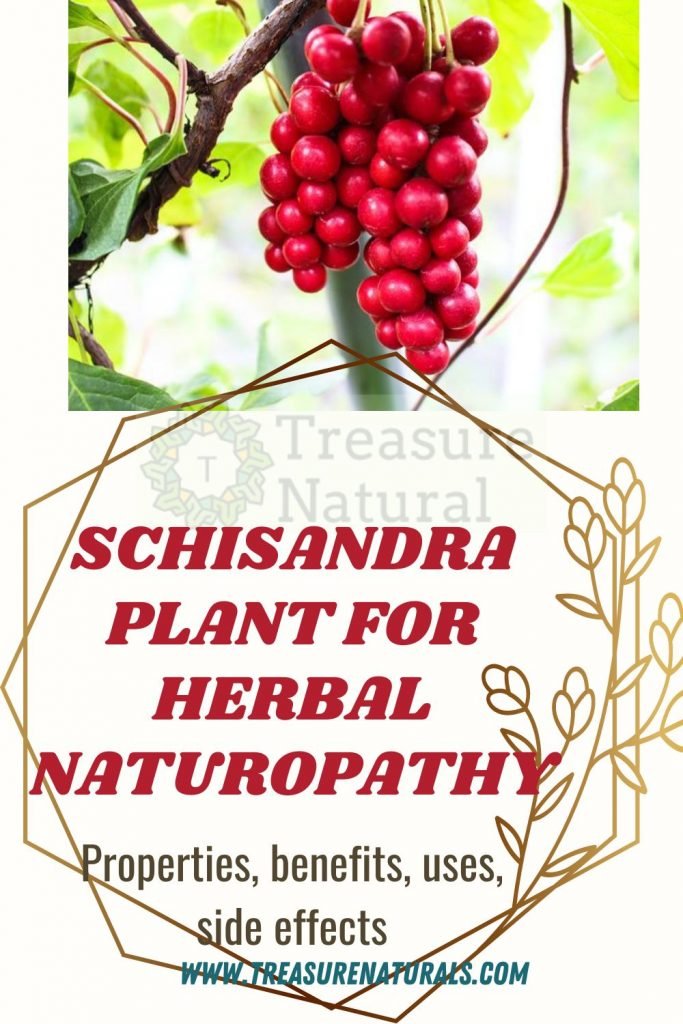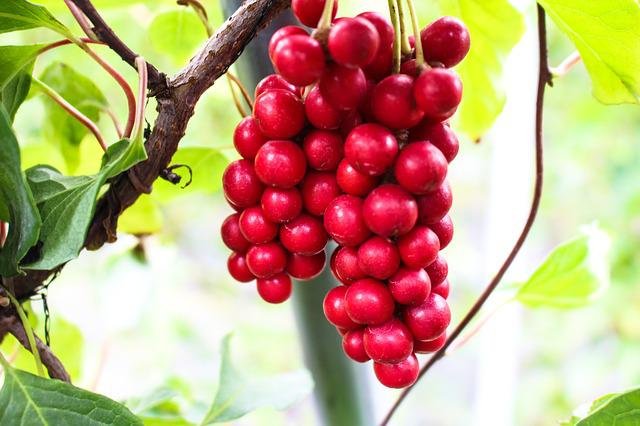
Schisandra is an adaptogenic plant rich in lignans, useful against stress and to stimulate the heart and the nervous system. Let’s find out better.
Property of the Schisandra
Schisandra is above all an adaptogenic plant (i.e. it goes where it is needed). Among the numerous properties are the following:
- Increases resistance to stress.
- It stimulates the central nervous system.
- It stimulates the heart: it is a vasodilator, normalizing blood pressure especially in respiratory insufficiencies.
- Raise your immune defenses.
- It has antioxidant, antitussive, antibacterial, expectorant properties.
- It tends to regulate gastric pH (one of the main targets of stress) by raising it when it is low and vice versa.
- It stimulates the central nervous system with the improvement of reflexes, endurance and working capacity in healthy individuals.
- Thanks to its antioxidant and protective properties of the liver cell, it is useful for reducing the toxins produced by intense physical activity.
- It plays an important role against excessive sweating and therefore in the loss of mineral salts.
- It is effective against bacteria associated with lung ailments.
- Normalizes blood pressure, without altering normal or high blood pressure.
- Gives good resistance to viral agents and infections.
- Due to the presence of vitamins A and E it improves the appearance of the skin.
- The lignans present in it prevent damage to the liver, stimulate its recovery and regulate the release of gastric acids.
These effects are primarily to be attributed to lignans such as: schisandrine, schisandrol, schisanterin and gomisine, or the active principles contained in schisandra and belonging to the class of phytoestrogens.
The lignans found in Schisandra chinensis help regenerate liver tissue damaged by harmful influences, such as viral hepatitis and alcohol. Main active components is the essential oil present in fruits, volatile, composed of citral sesquicarere, citric acid, malic acid, tartaric acid in moderate quantities, monosaccharides, resin, pectin, rich in vitamins A, C, E, phospholipids, sterols, tannins.
How to use
The parts used are the fruit, completely ripe, dried in the sun, whose taste is a mixture of sour, sweet, salty, hot and bitter flavors; and the seeds, also with a sour, sweet, salty flavor. This unusual combination of flavors is reflected in its Chinese name wu-wei-zi, which means “fruit of five flavors“.
Herbal preparations based on Schisandra, obtained with extracts and fresh powder, are used as adaptogens for their antioxidant effects and to increase energy. The fruit helps protect the liver from toxins.
It is used to treat cough, asthma, insomnia, stress, chronic diarrhea, spontaneous and night sweats, involuntary ieaculation, thirst, impotence, physical exhaustion and excessive diuresis.
Schisandra decoction: pour about 200 ml of water and a level spoonful of schisandra into a container. Bring to a boil and boil for 10 minutes. Turn off and leave to infuse for 10 minutes (stirring occasionally), filter, sweeten to taste. How to use: 1 to 2 cups a day, preferably in the morning and early afternoon.
Contraindications of Schisandra
Possible contraindications, although rare, can be stomach upset, decreased appetite, hives. It could also occasionally cause heartburn, gastric acidity.
Caution in those suffering from reflux esophagitis, or in the presence of a peptic ulcer, in those suffering from epilepsy, high blood pressure and intracranial hypertension. Caution in pregnancy and breastfeeding (do not take unless advised by your doctor).
Description of the plant
The schisandra (Schisandra chinensis) belongs to the Schisandracee family. The name means “seed of the five aromas”. Schisandra chinensis is a climbing plant with a woody stem with a very contained, non-invasive bearing, but if left to vegetate freely, it can reach up to ten meters in height.
It has dense deciduous, pointed, medium-small, slightly fleshy leaves of a beautiful bright light green color with marked ribs that accentuate the beauty of the whole and a characteristic petiole which, when young is red, while in autumn, before the fall, they take on a pleasant yellow-orange color. The fruits are berries that are red when they ripen.
Habitat of the Schisandra
The schisandra chinensis plant is found throughout the north and north-east of China and in the neighboring regions of Russia and Korea.
Background

In 1998, Russia celebrated Schisandra chinensis with the issue of a postage stamp.






